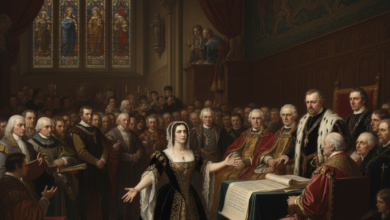Why Are The Buttons On The Left Side Of Women’s Clothing?

If you are currently wearing a shirt, take a look at the location of the buttons on it. If you’re a man, then the buttons will likely be on the right, but on a woman’s shirt, the buttons are usually on the left. How about starting to unravel the secret of the buttons on the left side of women’s clothes?
It seems like something we all take for granted, but why is that? In most countries, right-handed people outnumber left-handed people, so why are women’s shirts buttoned still on the left?
Short answer: There is no definitive reason behind this practice, but there are a few plausible hypotheses; one of them, until the mid-1800s, noblewomen recommended this clothing pattern for their servants. The buttons on the left made it easier for them to pull their servants up, rather than torture them.
As with many other historical traditions and events, there is no definite and indisputable reason why women’s clothing should have buttons on the left side. But as noted, there are some good hypotheses, so let’s take a closer look.
Buttons on the left are more useful if worn by someone else
This is one of the most popular assumptions and it makes quite a lot of sense. According to this idea, the trend of buttons on the left was determined by the wealthy women of the Victorian era (1830s-1900s).
At that time, both men and women wore a lot of clothing. However, women’s clothing was very complex, consisting of corsets, petticoats, bloomers, gowns, aprons, and a wide variety of accessories. Therefore, they always needed help getting dressed. With this in mind, cloth manufacturers designed clothes that were easier for people to use, in order to prevent servants from being fired.

Other Reasons Why Women’s Clothes Have Buttons on the Left Side
Breast-feeding
There’s a more recent hypothesis on women’s clothing that has gotten quite a bit of traction over the past decade. Right-handed women can hold their dolls in their left hand, leaving their right hand free. Therefore, it becomes more convenient for them to unbutton and breastfeed their babies with ease in shirt-design shirts that consist of buttons on the left side.
Socio-cultural impact
Another hypothesis stems from a widespread belief from the Victorian era that the ‘left hand goes down the right’. Putting buttons on the left side of women’s clothing is a subtle indication for women that they are inferior and not to forget their ‘right place’ in society. Of course, this assumption makes no sense and the margin of truth is completely zero.

Napoleon’s obsession
Apart from the various suggestions offered to explain the buttons on the left side of women’s clothing, there is another hypothesis. It is said that Napoleon Bonaparte, an eminent French general and political leader, desperately wanted to prevent women from making fun of him. In one of Napoleon’s most famous portraits, he appears with his right hand tucked under his waistcoat.
They tucked their right hands under their clothes, thinking they were mocking the women’s iconic poses. To put an end to this growing fashion that clearly offended the great executive, he mandated that women’s clothing should only have buttons on the left side so that they would no longer mock their laconic poses.
However, it is unlikely that Napoleon’s orders on women’s clothing managed to single-handedly capture the entire worldview of how women’s clothing should be designed.
Many hypotheses have been described, but none of them can be considered as the actual reason for placing buttons on the left side of clothing. Women’s clothing may always remain a mystery!







Really helpful for sewing shirts while button and kaj forget always it help me now